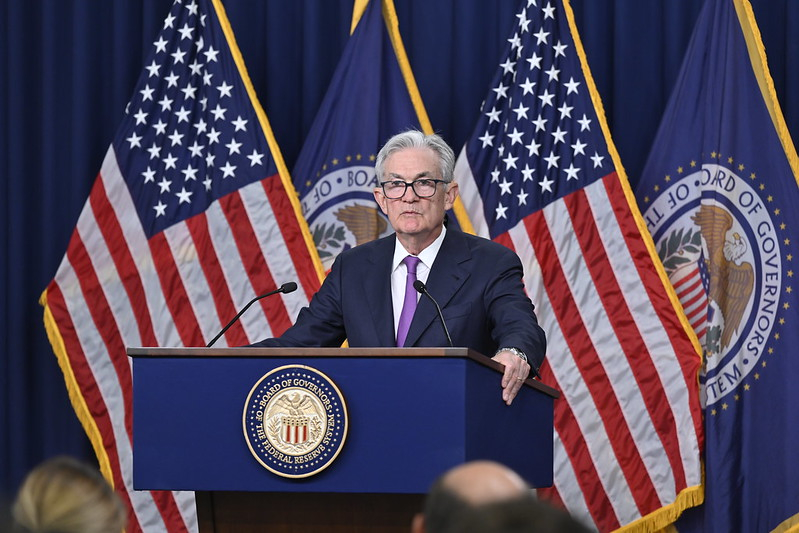Federal Reserve officials held interest rates steady at their monthly policy meeting on Sept. 20, 2023 — only the second time they have done so since embarking on a rate-raising campaign a year and a half ago. But it is what they hinted at rather than what they did that caught many economists’ attention: Fed officials indicated that they don’t expect rates to end 2023 higher than they did in June – when they last issued their projections.
Since the hiking cycle began, observers have worried about whether increased rates could push the U.S. economy into a downturn. Some have even speculated that a recession had already begun. However, the economy has been more resilient than many expected, and now many economists are wondering whether the seemingly impossible soft landing – that is, a slowdown that avoids crashing the economy – has become a reality.
As a finance professor, I think it’s premature to start celebrating. Inflation is still almost double the Federal Reserve’s target of 2%, and is expected to come in around 4% for September. What’s more, the economy is still growing quite fast, with consensus forecasts showing gross domestic product will rise by nearly 3% this quarter. Some early data suggests that could be a low estimate.
What’s next?
Fed-watchers are parsing every word from the central bank to determine whether another hike is coming this year or next, or if the cycle is truly over. To understand that decision, it helps to consider the bigger picture.
While the U.S. economy has certainly avoided a downturn for longer than many expected, the inflation battle is a long way from finished. In fact, this wouldn’t be the first time the economy looked like it would avoid a soft landing. For the next several months, the economy is not likely to implode without a major spark.
However, inflation may not continue to fall as quickly in the coming year, which means the Fed may still raise rates more than some expect. If rising energy prices continue to boost transportation costs, other goods could also get more expensive, which may mean higher interest rates for longer.
Is this really the end?
Though Federal Reserve Chair Jerome Powell seemed to indicate that the committee is approaching the end of the hiking cycle, only 10% of economists expect that it is over at this point – not that economists’ track record of forecasting rates is great either. This is largely because Powell has been clear that the Fed is basing its decisions on economic data, which have been strong so far and hopefully will continue in that direction.
So while everyone is watching the Fed this week, they should also keep an eye on broader economic conditions. With luck, reports will continue to be strong enough to avoid a downturn, but not so strong that inflation picks back up.



 Rishi Sunak wants to cut the cost of ‘sicknote’ Britain
Rishi Sunak wants to cut the cost of ‘sicknote’ Britain  Impact investing in Paris suburban ‘banlieue’ neighbourhoods
Impact investing in Paris suburban ‘banlieue’ neighbourhoods  Why central banks should stop raising interest rates
Why central banks should stop raising interest rates  Why is the London Stock Exchange losing out to the US
Why is the London Stock Exchange losing out to the US  The RBA has kept interest rates on hold. Here's why it'll be cautious from here on
The RBA has kept interest rates on hold. Here's why it'll be cautious from here on  The yen plunges to 34-year low despite interest rate hike
The yen plunges to 34-year low despite interest rate hike  How India’s economy has fared under ten years of Narendra Modi
How India’s economy has fared under ten years of Narendra Modi  Japan Posts 7.7% Growth in Machinery Orders
Japan Posts 7.7% Growth in Machinery Orders  China’s new world order: looking for clues from Xi’s recent meetings with foreign leaders
China’s new world order: looking for clues from Xi’s recent meetings with foreign leaders  Will global oil supply be at risk if Iran and Israel pull the Middle East into war?
Will global oil supply be at risk if Iran and Israel pull the Middle East into war?  Inflation: why prices look likely to stay high in the UK and Ireland, and what that means for mortgages
Inflation: why prices look likely to stay high in the UK and Ireland, and what that means for mortgages  Interest rates: Monetary policy is always political as central banks opt to back the financial sector
Interest rates: Monetary policy is always political as central banks opt to back the financial sector  How cuts to marginal income tax could boost the UK’s stagnant economic growth
How cuts to marginal income tax could boost the UK’s stagnant economic growth  The idea that US interest rates will stay higher for longer is probably wrong
The idea that US interest rates will stay higher for longer is probably wrong 
































